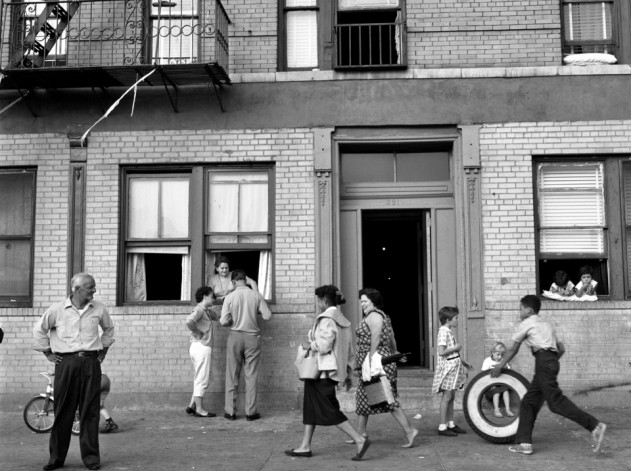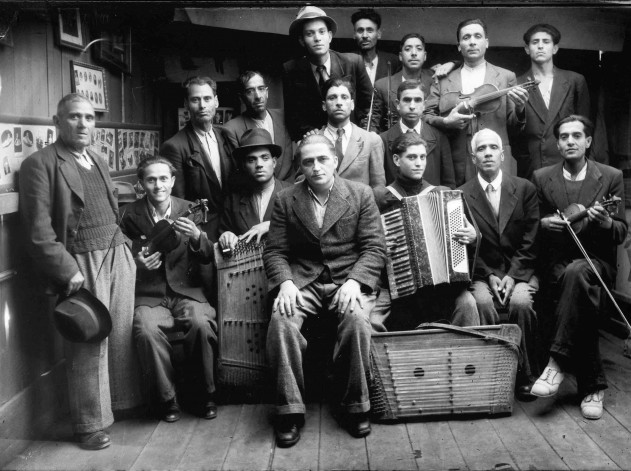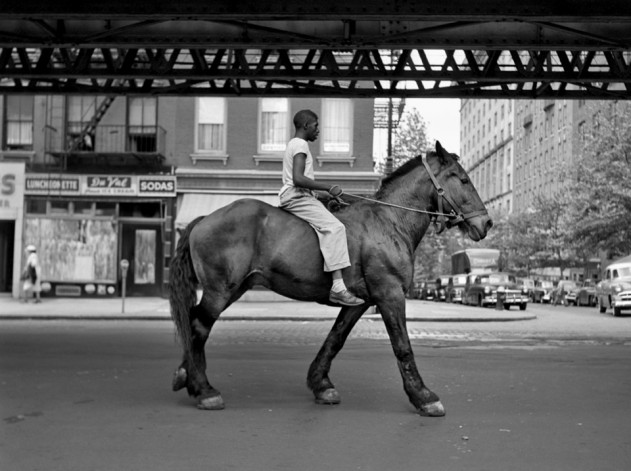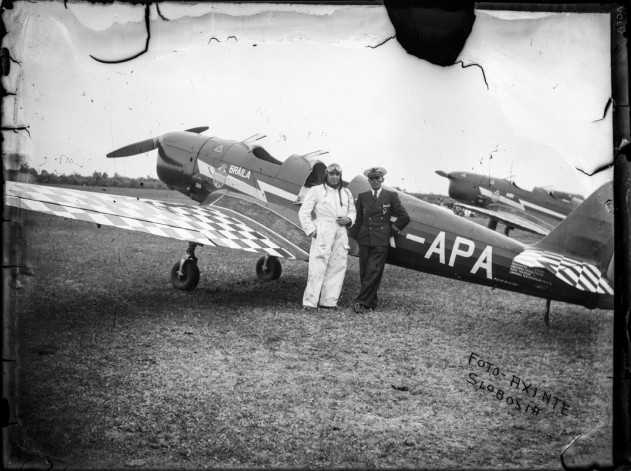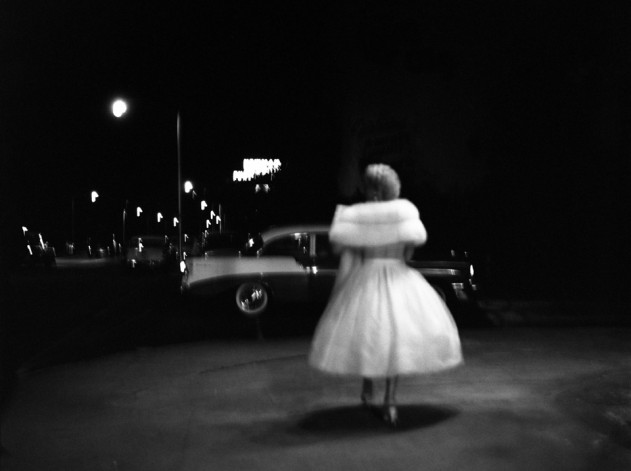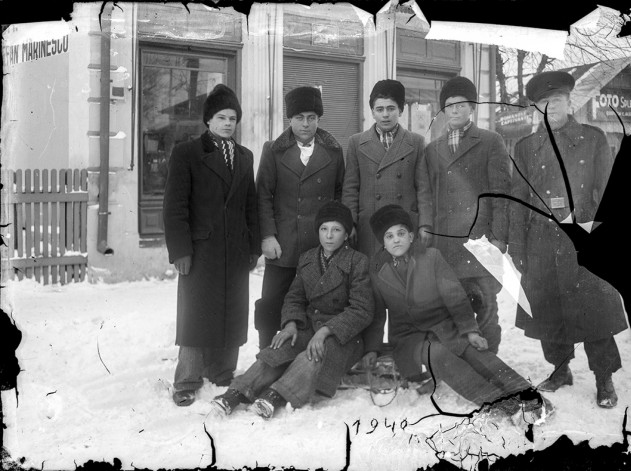How many Vivian Maiers are there walking among us?
- Text by Alex King
- Photography by Costică Acsinte - ©Vivian Maier/Maloof Collection

Charlie Siskel (Bowling for Columbine, Religulous) co-directed Finding Vivian Maier with Chicago historian and collector John Maloof, who first unearthed Maier’s lost collection of over 150,000 incredible photographs that offer a great insight into mid-century American life. The film attempts to discover who this mysterious nanny was and why her body of work only came to light after her death.
Cezar Popescu discovered Romanian photographer Costică Acsinte’s archive of 10,000 prints and glass plate negatives slowly rotting away in a local museum. Acsinte was born in 1897 and began his career as a photographer for the Romanian Army during the First World War, before setting up his studio Foto-Splendid in Cezar’s home town of Slobozia in the late 1920s. Until he retired in 1960, he was probably the only professional photographer in the area and his archive is a unique document of local people during that time. Cezar is currently racing against time to digitise the collection before the images degrade beyond all recognition. You can read more about his story in Huck 46 – The Documentary Photography Special II.
We asked Charlie and Cezar to discuss separating photographers from their photographs, how much great work we’ve lost over time and how Vivian and Costică’s lives would have changed if they had lived in the internet age.
How much do you feel you’ve got to know the people whose archives you discovered? How much can you learn about a person from the art they left behind?
Charlie Siskel: People always get each other wrong. And yet it doesn’t stop us from trying. Take the fact that Maier’s work was not seen widely until after her death and that she more or less kept her work private. People are convinced this proves Vivian Maier’s intentions — including people in the film who knew Maier for years. We show people saying “She would have hated this.” But just because Maier did not IN FACT show her work, this of course doesn’t mean Maier did not INTEND to show her work. There is a leap there. You cannot look at the facts of a person’s life and conclude that everything that happens was intended or that everything people intend is realised in our lives. We all know this to be true or we would all be millionaires, we would all be wildly successful, all our dreams would come true, or if they didn’t, well they weren’t dreams in the first place. We know this isn’t how the world works.
I believe Maier wanted to share her work at various times in her life and struggled with it as all artists do. As we show in the film, she did actually share her work, in fits and starts, setting up a postcard business with a printer in France, for example. In the letter we show in the film, Maier also expresses a desire to share more of her work — telling the French printer that she wants him to print her other work.
I believe Maier’s work was not widely seen during her lifetime for the same reasons many artist’s work isn’t seen. Mundane obstacles get in the way — it is expensive, you need space and time — and personal limitations — it can be intimidating to risk rejection. This is not as romantic as the idea that Maier was a private artist, too pure to have her work sullied by public view, and that this somehow makes her a better exemplar of what it is to be an artist. I think the truth is messier than this fairy tale idea. And ultimately it is more heroic. Maier did not set out from the start saying “I will create more than 100,000 images over decades and never share them and hope that they are never seen.” People don’t work that way. Instead she laboured for decades overcoming challenges, financial and personal, and in spite of the fact that she never had the support of other artists or collectors or the validation of the public or galleries, she continued to do the work. That is what artists do. And that is what makes her story heroic.
Cezar Popescu: I’ve always tried to make clear distinction between someone’s persona and their work. If they had a pathetic life or were a hateful person this wouldn’t make me love or dislike their art more. So, I try not to be distracted by Acsinte’s personality or other details about him when I look at his pictures. This is very hard to do because you can see tell tale details in lots of his photos. Instead of trying to understand the man who made the picture, I believe it is more important to understand the society of the time, as revealed through the image. In many cases this will shed a different light on the picture itself – think, for example, about what Dorothea Lange’s ‘Migrant Mother’ would mean if you had no knowledge of the Great Depression. From another point of view, I am fully aware that someone could not accomplish what Charlie did without taking into account who the artist was and how she chose to live her life. Fortunately for me, I could do my job without focussing on these personal details.
What personally attracts you to their work?
Cezar: Acsinte was one of few photographers active in Ialomița county so his pictures are strong visual documents of Romanian society in that place and time. For me, this is the most important aspect and makes me want to save his work. Acsinte was a commercial photographer for more than 30 years, so his work also reflects the needs and desires of his clients, who clearly approved, as they kept coming back to him.
Charlie: Maier is a true artist. There is an element of nostalgia to her work and the historic value is clear, but she is not just chronicling her era and milieu. She is documenting social and racial issues, but she is also interested in the formal qualities of the medium. In terms of subject matter her interests are broad. She is also drawn to other themes — children and families play a significant role, but also women’s fashion. She had many interests.
Cezar: Beside the obvious difference between the two photographers, I believe both shared a passion for photography itself.
Today any photographer can upload their work to the internet and have it freely accessible to all. Could our generation produce another Vivian Maier or Costică Acsinte? How would their lives and work have been different if they had access to today’s technology?
Charlie: Maier was not an introvert. She was private certainly — she didn’t share much about her past and her background with the people around her. But it is important to remember that these were her employers. Maybe it isn’t surprising that she didn’t share details about herself. Did they ask? Vivian was the help. But Vivian was not a wallflower. She was the opposite. She was adventurous and engaged in the world around her. She was opinionated and gregarious. I think Maier is exactly the kind of person who would benefit from having modern tools of distribution — putting her own work online. It is speculation of course but I like to think that Maier — who recorded mini radio documentaries and short films in addition to her photographs — is the type of person who would today take full advantage of technology in sharing her work.
Cezar: One can only fantasise about how Acsinte’s life would be different if he had access to today’s technology. Sharing your pictures online doesn’t make them accessible forever. Today you need to take an extra step for this to happen, either by donating them to society or by releasing them with a Creative Commons license, or something similar. The greatest danger to a photographer’s work today is the black hole created by the dysfunctional copyright system. Thanks to Romanian law, Acsinte’s work produced between 1930-1960 is now public domain.
What have we gained collectively by discovering these archives? How many Vivian Maiers or Costică Acsintes are there out there whose work we still need to unearth?
Cezar: As I mentioned earlier, I try not to be influenced by the importance of Acsinte’s work, otherwise it would be even harder for me to finish the project. I only want to finish it the job of archiving and sharing the work, so that everyone is then free to analyse it. I am sure that there are tens, maybe hundreds, of Acsintes – at least in Romania – hidden somewhere. Lots of their work is lost, some of their work was intentionally destroyed, but I know that some of their work is still waiting to be discovered and brought to light.
Charlie: I believe that most of the great works of art we as humans create are lost. Maier is exceptional in that she was a great artist but she is also exceptional in that her work was discovered and not lost. One wonders how many Vivian Maier’s are taking care of children today or working at retail jobs. Kafka worked as an accountant. Maier’s story tells us to take a closer look at the people around us. Who knows, maybe the person sitting next to you on the bus is the next Vivian Maier.
To what extent did Vivian and Costică seek recognition? What do you think they would have made of the attention they’ve received after the posthumous discovery of their work?
Charlie: I feel Maier’s reclusiveness has been overstated and misrepresented. I would like to believe that Maier would be gratified knowing that the art she created is being seen and appreciated by millions of people around the world. We have created a scholarship in Vivian Maier’s name to help young women artists pursue their work because we believe Maier’s legacy is shared. The impact of Maier’s work is larger than the work itself. Her story has inspired artists to pursue their craft, to share their work with others, to participate in the collective act of making and experiencing art. I would like to think that Maier would be proud of the impact her work and her story have made.
Cezar: I know for sure that Acsinte wanted his name to last beyond his lifetime. He told one of his grandson that was teaching photography to keep the signboard on top of his studio, he wanted the name ‘Foto-Splendid Acsinte’ to live on. That’s one of the reasons I believe he would appreciate my project. Unfortunately, I think his signboard is lost. I have only seen it in two of his photographs: in one of them it’s just reflected in a window in his studio. Personally, I would love my work to be known after my death. I think most people would feel the same; we all want to make a tiny dent in history, at the very least.
Finding Vivian Maier is out now in the UK on DVD, Blu-Ray and VOD.
Latest on Huck

Is the UK ready for a Kabaddi boom?
Kabaddi, Kabaddi, Kabaddi — Watched by over 280 million in India, the breathless contact sport has repeatedly tried to grip British viewers. Ahead of the Kabaddi World Cup being held in Wolverhampton this month, Kyle MacNeill speaks to the gamechangers laying the groundwork for a grassroots scene.
Written by: Kyle MacNeill

One photographer’s search for her long lost father
Decades apart — Moving to Southern California as a young child, Diana Markosian’s family was torn apart. Finding him years later, her new photobook explores grief, loss and connection.
Written by: Miss Rosen

As DOGE stutters, all that remains is cringe
Department of Gargantuan Egos — With tensions splintering the American right and contemporary rap’s biggest feud continuing to make headlines, newsletter columnist Emma Garland explains how fragile male egos stand at the core of it all.
Written by: Emma Garland

Photo essay special: Despite pre-Carnival anxiety, Mardi Gras 2025 was a joyous release for New Orleans
A city celebrates — Following a horrific New Year’s Day terror attack and forecasts for extreme weather, the Louisiana city’s marquee celebration was pre-marked with doubt. But the festival found a city in a jubilant mood, with TBow Bowden there to capture it.
Written by: Isaac Muk

From his skating past to sculpting present, Arran Gregory revels in the organic
Sensing Earth Space — Having risen to prominence as an affiliate of Wayward Gallery and Slam City Skates, the shredder turned artist creates unique, temporal pieces out of earthly materials. Dorrell Merritt caught up with him to find out more about his creative process.
Written by: Dorrell Merritt

In Bristol, pub singers are keeping an age-old tradition alive
Ballads, backing tracks, beers — Bar closures, karaoke and jukeboxes have eroded a form of live music that was once an evening staple, but on the fringes of the southwest’s biggest city, a committed circuit remains.
Written by: Fred Dodgson
